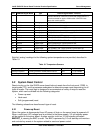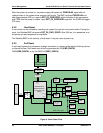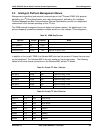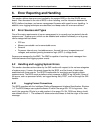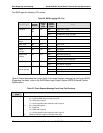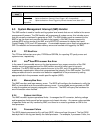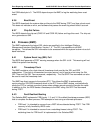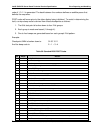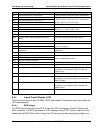
Intel® SHG2 DP Server Board Technical Product Specification Error Reporting and Handling
Revision 1.0 Intel Order Number C11343-001
39
•
FRB level 3 is intended to recover from a watchdog timeout on hard reset or power-up.
The Sahalee BMC provides hardware functionality for this level of FRB.
6.4.3.1 FRB-1
In a multiprocessor system, the BIOS registers the application processors in the multi-
processor (MP) table and the ACPI APIC tables. When started by the BSP, if an application
processor (AP) fails to complete initialization within a certain time, it is assumed to be
nonfunctional. If the BIOS detects that an application processor has failed BIST or is
nonfunctional, it requests the BMC disable that processor. The BMC then generates a system
reset while disabling the processor; the BIOS will not see the failed processor in the next boot
cycle. The failing AP is not listed in the MP table, nor in the ACPI APIC tables, and is invisible to
the OS. If the BIOS detects that the BSP has failed BIST, it sends a request to the BMC to
disable the present processor. If there is no alternate processor available, the BMC beeps the
speaker and halts the system. If the BMC can find another processor, BSP ownership is
transferred to that processor via a system reset.
6.4.3.2 FRB-2
The second watchdog timer (FRB-2) in the BMC is set for approximately 6 minutes by BIOS
and is designed to guarantee that the system completes BIOS POST. The FRB-2 timer is
enabled before the FRB-3 timer is disabled to prevent any “unprotected” window of time. Near
the end of POST, before the option ROMs are initialized, the BIOS will disable the FRB-2 timer
in the BMC. If the system contains more than 1 GB of memory and the user chooses to test
every DWORD of memory, the watchdog timer is disabled before the extended memory test
starts, because the memory test can take more than 6 minutes under this configuration. If the
system hangs during POST, the BIOS will not disable the timer in the BMC, which generates an
asynchronous system reset (ASR).
6.4.3.3 FRB-3
The first timer (FRB-3) starts counting down whenever the system comes out of hard reset,
which is usually about 5 seconds. If the BSP successfully resets and starts executing, the BIOS
will disable the FRB-3 timer in the BMC by de-asserting the FRB_TIMER_HLT signal (GPIO)
and the system continues on with the POST. If the timer expires because of the BSP’s failure to
fetch or execute BIOS code, the BMC resets the system and disables the failed processor. The
system continues to change the BSP until the BIOS POST gets past disabling the FRB-3 timer
in the BMC. The BMC sounds beep codes on the speaker if it fails to find a good processor.
The process of cycling through all the processors is repeated upon system reset or power
cycle.
6.5 Error Messages and Error Codes
The system BIOS displays error messages on the video screen. Prior to video initialization,
beep codes inform the user of errors. Power-On Self Test (POST) error codes are logged in the
event log. The BIOS displays POST error codes on the video monitor.
The following are definitions of POST error codes, POST beep codes, and system error
messages.



